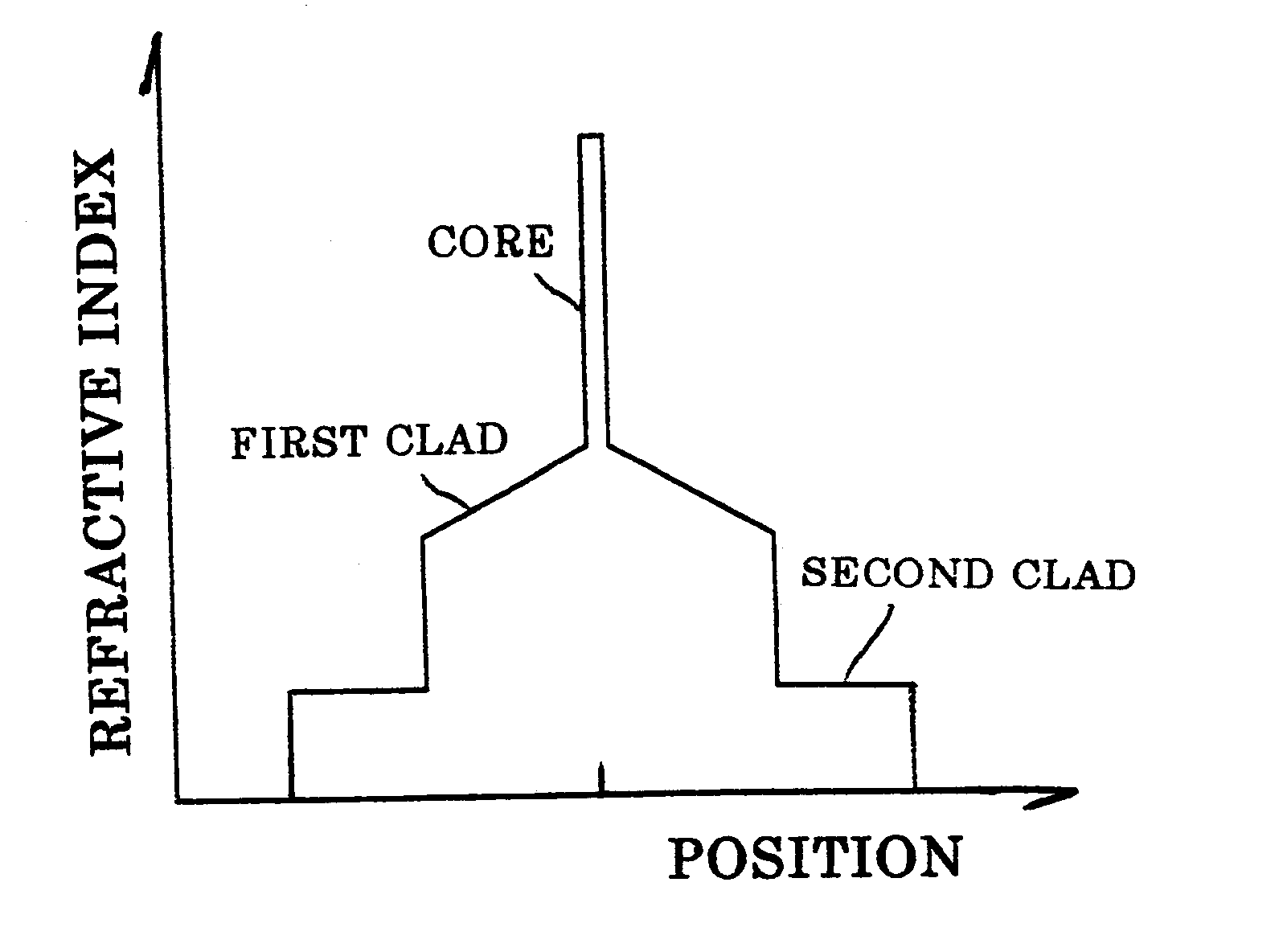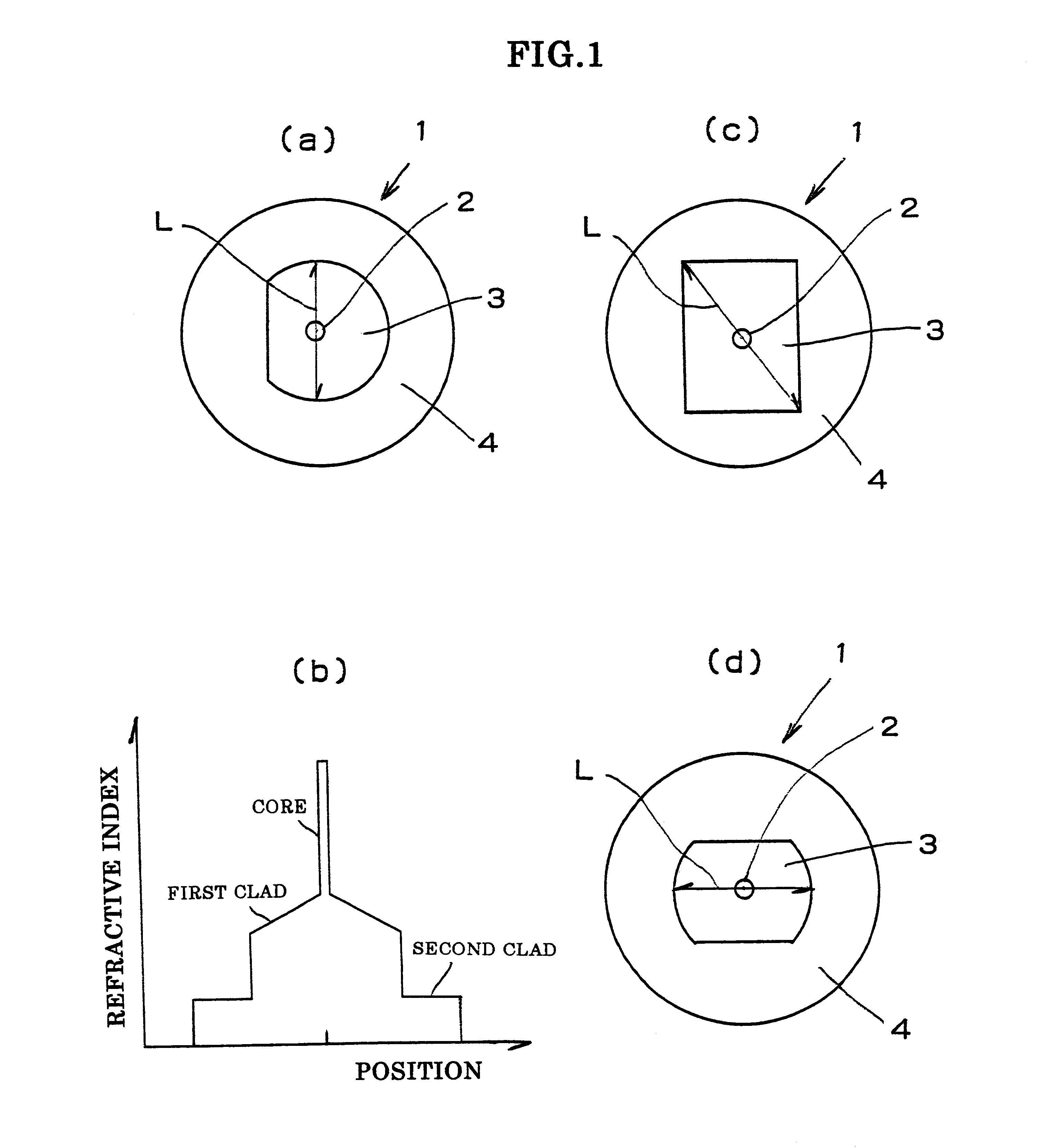Method for producing base material for optical fiber having deformed first clad, base material for optical fiber and optical fiber
- Summary
- Abstract
- Description
- Claims
- Application Information
AI Technical Summary
Benefits of technology
Problems solved by technology
Method used
Image
Examples
example
A glass rod was produced according to VAD method, which was then drawn to have a diameter of 3 mm, yielding a core rod. A difference in a refractive index of the core rod was +0.3% (based on pure quartz level).
A glass rod in the region of the first clad was produced according to VAD method, and drilling was conducted to form a hole having an inner diameter of 5 mm at the center of the glass rod. Then, the core rod produced above was inserted in the hole, and then was collapsed on a glass lathe to be unified. As described above, the glass rod having the core / the first clad was produced.
Then, it was drawn to have a diameter of 10 mm, and a part of the glass rod was ground to be linear so that the section may be D-shape. Porous glass fine particles were deposited around the glass rod having a section of D-shape according to VAD method, and was vitrified in an atmosphere of fluorine to yield a glass base material (preform) wherein the second clad was formed. Then the periphery of the pr...
example 2
A glass rod having a core and a first clad was drawn to have a diameter of 20 mm, and a part of the glass rod was ground to be linear so that the shape of the section may be D-shape. Porous glass fine particles were deposited around each of 20 glass rods having a section of D-shape according to VAD method. Cracks occurred in 20 glass rods all obtained by the conventional method. However, cracks did not occur in 16 of 20 glass rods obtained by the method of the present invention, and thereby the base material for the optical fiber having the second clad with a round section could be produced. In four of them, breakage and crack occurred in a step of cooling the porous glass fine particles after deposition.
The present invention is not limited to the above-described embodiment. The above-described embodiment is a mere example, and those having the substantially same structure as that described in the appended claims and providing the similar action and effects are included in the scope...
PUM
| Property | Measurement | Unit |
|---|---|---|
| Length | aaaaa | aaaaa |
Abstract
Description
Claims
Application Information
 Login to View More
Login to View More - R&D
- Intellectual Property
- Life Sciences
- Materials
- Tech Scout
- Unparalleled Data Quality
- Higher Quality Content
- 60% Fewer Hallucinations
Browse by: Latest US Patents, China's latest patents, Technical Efficacy Thesaurus, Application Domain, Technology Topic, Popular Technical Reports.
© 2025 PatSnap. All rights reserved.Legal|Privacy policy|Modern Slavery Act Transparency Statement|Sitemap|About US| Contact US: help@patsnap.com


